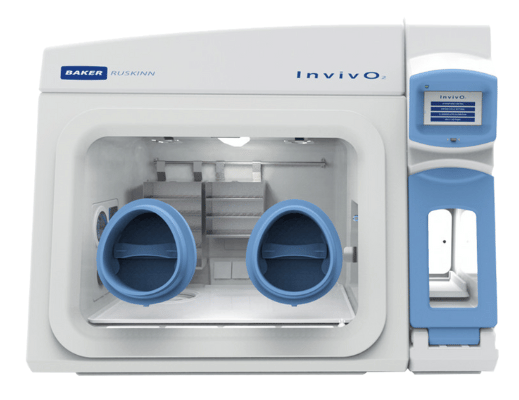This study aimed to investigate the effect of a static magnetic field (SMF) on the radiation response of pancreatic cancer cells in polyurethane-based highly macro-porous scaffolds under hypoxic (1 % O2) and normoxic (21 % O2) conditions to better understand MR-guided radiotherapy and shed light on the potential interaction phenomenon between SMF and radiation in a three-dimensional (3D) microenvironment.

InvivO2. Image Credit: Scintica Instrumentation Inc.
Methods
Pancreatic cancer cells (PANC-1, ASPC-1) were seeded into fibronectin-coated extremely porous polyethylene scaffolds for biomimicry and grown for 4 weeks in vitro normoxia (21% O2), followed by a 2-day exposure to either in vitro hypoxia (1% O2) or in vitro normoxia (21% O2).
The samples were exposed to 6 MV photons, either with or without a 1.5 T field, then in situ post-radiation monitoring was performed (1 and 7 days after irradiation treatment) by quantifying (i) live dead and (ii) apoptotic profiles.
Results
The study reports:
- Hypoxia-associated radioprotection for pancreatic ductal adenocarcinoma is consistent with earlier findings.
- Radiation was more effective in the presence of SMF in in vitro hypoxia (1 % O2) for both short-term (1 day) and long-term (7 days) post-radiation analysis
- Radiation was more effective in the presence of SMF in in vitro normoxia (21 % O2) for both short-term (1 day) and long-term (7 days) post-radiation analysis in a 3D pancreatic cancer model
Conclusion
With a limited understanding of the potential interaction phenomenon between SMF and radiation, this 3D approach enables combination evaluation for cancer in which radiotherapy’s significance is still evolving.
Advances in knowledge
This work used a 3D model to evaluate MR-guided radiotherapy in a hypoxic microenvironment, demonstrating that this could be a helpful platform for further investigating SMF’s influence on radiation.
References
Wishart, G. et al. (2022). Enhanced effect of X-rays in the presence of a static magnetic field within a 3D pancreatic cancer model. British Journal of Radiology, 96(1143). https://doi.org/10.1259/bjr.20220832.
About Scintica Instrumentation Inc.
Scintica Instrumentation Inc., a high value distributor of scientific medical equipment, was created as a joint venture between two companies, Indus Instruments and ONS Projects Inc., both with long standing experience in the medical device instrumentation field. Indus Instruments is an engineering and manufacturing company with excellence in designing and producing sophisticated products for both medical and other high-tech clients in aerospace, chemical and oil and gas industries. ONS Projects Inc. is a life science investment and marketing company built on the foundation of two other successful manufacturing companies in the laboratory instrumentation field,
The principals of the two companies each have more than 25 years of experience of manufacturing, selling and supporting scientists in their research around the world. Our team consists of scientists, applications experts, engineers and sales professionals from a cross section of backgrounds, who excel at simplifying transactions and ensuring that scientists have the best equipment for achieving research excellence.
At Scintica Instrumentation, we distribute for selected manufacturers from all over the world and represent them in multiple countries including the United States, Canada, and Europe, as well as in Asia through a network of authorized sub-distributors.
Sponsored Content Policy: News-Medical.net publishes articles and related content that may be derived from sources where we have existing commercial relationships, provided such content adds value to the core editorial ethos of News-Medical.Net which is to educate and inform site visitors interested in medical research, science, medical devices and treatments.